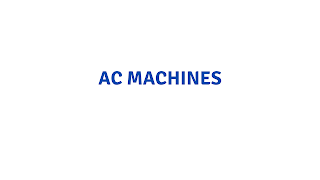AC MACHINES
11. The core flux of a practical transformer with a resistance loada) is strictly constant with load changes
b) increases linearly with load
c) increases as the square root of the load
d) decreases with the increase of load
ans: a
12. In a transformer, zero voltage regulation at full load is
a) not possible
b) possible at unity power factor load
c) possible at leading power factor load
d) possible at lagging power factor load
ans: c
13. A single-phase transformer has a maximum efficiency of 90% at full load and unity power factor. Efficiency at half load at the same power factor is
a) 86.7%
b) 88.26 %
c) 88.9%
d) 87.8%
ans: d
14. The main purpose of performing open-circuit on a transformer is to measure its
a) copper loss
b) core loss
c) total loss
d) insulation resistance
ans: b
15. The desirable properties of transformer core material are
a) low permeability and low hysteresis loss
b) high permeability and high hysteresis loss
c) high permeability and low hysteresis loss
d) low permeability and high hysteresis loss
ans: c
16. The all-day efficiency of a transformer depends primarily on
a) it's copper loss
b) the amount of load
c) duration of load
d) both b and c
ans: d
17. The use of higher flux density in the transformer design
a) reduces the weight per KVA
b) increases the weight per KVA
c) has no relation with the weight of the transformer
d) none of the above
ans: a
18. What does the use of higher flux density in the transformer design
a) Increase the weight per KVA
b) Decrease in weight per KVA
c) Reduced iron losses
d) Reduced copper losses
ans. b
19. Cores of large power transformers are made from which one of the following?
a) Hot-rolled steel
b) Cold-rolled non-grain-oriented steel.
c) Cold-rolled grain-oriented steel
d) Ferrite.
ans. c
20. Grain-oriented laminated sheet steel in transformer reduces
a) copper loss
b) eddy current loss
c) hysteresis loss
d) none of the above
ans. c

No comments:
Post a Comment